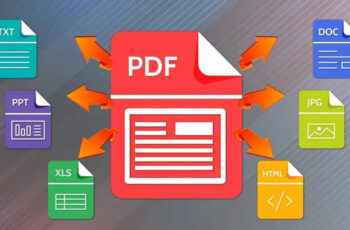R is one of the most popular languages used for Data Science and statistical computing. Modern industries are now dealing with huge amounts of data increasing at exponential levels. There are millions of jobs emerging for R programmers as Data Analysts, Business Analysts, Data minors, and more. So, let’s discuss the R language and the reasons why it’s considered to be the best programming language for Data Science.
Table of Contents
What is R?
R is a statistical computing and graphics programming language mainly used for creating statistical models, data analysis, visualization, data mining, and more. The language was developed in the year 1995 by Robert Gentlemen and Ross Thaka at the bell laboratories as an extension. Since then, a lot of changes were done and new packages were added for implementing Data Science concepts.
The main repository of R language named Comprehensive R Archive Package(CRAN), contains over 10,000 packages dedicated to implementing data science models and statistical analysis. It also features graphical libraries that enable you to create visualizations from the processed data. Although R has a steep learning curve, it has a user-friendly interface and the syntax is easily understandable.
Why Learn R for Data Science?
Below are some of the reasons why you should learn R languages for Data Science:
- Job Opportunities
According to Gartner, there are more than 2.7 million jobs worldwide for R programming and Data Analytics professionals. Enterprises hire R programmers for various operations like Business Intelligence, data analytics, data mining, visualization, and more. So, it’s imperative to learn R programming if you want to become a data scientist. You can take a Data Science Course to learn the R language and get a job in this lucrative field.
- Open-source
It’s an open-source language which means you can download the language and use it for free. Also, the developers can modify the source code and their libraries to perform efficient calculations.
- Analytical Support
R has various libraries specially designed to perform analytical operations. You can use these libraries to organize your datasets, create proactive models, analyze and visualize them on a single interface.
- A complete language
Apart from statistical analysis and visualization, R is also an object-oriented programming language that enables you to execute other tasks and calculations.
- Extension Support
Because R is an open-source language, the developers and data scientists can create their own libraries and include new packages as an add-on.
- Database Interactions
R has several add-ons that enable you to interact with the database like Oracle and interact with it. It features packages for ROracle, RODBC, and ODBC database connectivity.
- Community Support
R has a huge community of experienced developers, data scientists, and researchers. The developers also arrange various workshops and boot camps of R, which makes it the best choice for amateurs interested in learning Data Science.
Benefits of Using R
Following are the benefits of using the R language for Data Science:
- Supports both procedural and object-oriented programming and comes with generic functions. It’s a comprehensive language that allows the user to interact with any Data Science tool.
- R contains thousands of packages and repositories to make the programming much easier. You can find default functions for sorting, searching, and transforming the datasets, resulting in a much easier programming environment.
- R is an interpreter-based language, which makes your code portable, easy to debug, and produce machine-independent.
- Easy to integrate with various programming languages such as C, C++, Java, Python, JavaScript, and FORTRAN. It is also compatible with technological frameworks such as Hadoop, ambiorix, Shiny, fiery, and HDFS.
- Open-source software makes it easy to use and create custom extensions. Also, there’s a huge community of developers that help each other to solve problems and work on new projects.
- Requires less computational power to perform complex calculations and visualize huge datasets without stressing our resources.
Companies Using the R Language for Data Science
R is used by major MNCs for data science and statistical modeling, Some of them are listed below:
- Facebook: Facebook uses the R language to analyze customer behavior and create relationships between different datasets.
- Google: R is the first choice of Google when it comes to analyzing the latest trends and keyword searches.
- Uber: Uber uses R packages like Shiny to create interactive graphics and show the data about nearby destinations.
- IBM: It’s one of the major companies that use the R language in their open computing platforms to develop analytical solutions to complex research problems.
- Airbnb: Packages like ‘dplyr’ and ‘gglplot2’ are used by Airbnb to perform their day-to-day operations. Also, it helps the company to find the best restaurants based on customer preferences and their destination.
Conclusion
Hope you understood why R is an ideal programming language for data science enthusiasts to perform data analysis. You can learn the language through various tutorials, blogs, and courses. Also, the large community will help you find the solutions to the problems you’re facing.


